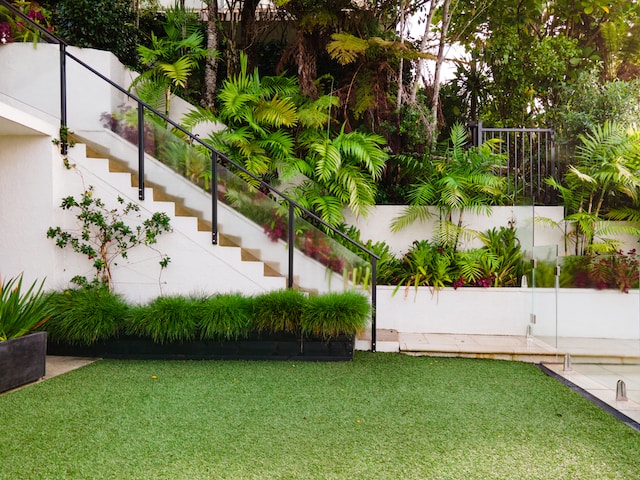
Your yard is more than just a piece of land; it’s an extension of your living space and a canvas for creativity. Planning carefully, working diligently, and paying attention to detail are all necessary to create the ideal visually beautiful yard. Whether starting from scratch or looking to revamp your existing landscape, this guide will walk you through five essential steps to transform your outdoor space into a haven of beauty and tranquility.
Step 1: Define Your Vision
Every successful landscaping project begins with a clear vision. Think for a moment about how you want your yard to seem. Are you looking for a low-maintenance hideaway, a contemporary paradise, or a lush green space? Consider the components you’d like to include, such as a garden, outdoor furniture, or a kids’ play area. We’ll base our decisions on your vision for the project.
Gathering Inspiration
To help solidify your vision, gather inspiration from various sources. Look through gardening periodicals, visit nearby botanical gardens, or look online for landscape inspiration. Pay attention to the distinctive characteristics of your area, such as the climate and native flora, since these may affect your decisions.
Step 2: Plan and Design
Once you have a clear vision of your dream yard, it’s crucial to translate those ideas into a tangible plan. Your landscape should be covered in detail in this plan, from the layout and measurements to the choice of particular elements. Consider practical factors, such as how drainage may affect the design and how sunshine and shadow affect your chosen pieces.
If you find yourself uncertain about the technical intricacies of landscaping, it’s highly advisable to seek the expertise of a professional landscape architect. They have the expertise to assist you in converting your idea into a thorough and workable strategy while addressing any possible issues that can develop during the implementation stage.
Step 3: Choose the Right Plants
The selection of plants plays a pivotal role in determining the overall allure of your yard. Choosing plants that can survive in your area’s environment is crucial. In particular, native plants seem to be a sensible choice because of their toughness and adaptation to local circumstances.
Consider integrating artificial grass into areas prone to such stressors, for example, if you reside in Chicago’s challenging climate, where harsh winters and scorching summers can wreak havoc on natural grass. Artificial grass in Chicago provides a lush, green appearance year-round without requiring extensive maintenance.
Sustainable Landscaping
Opt for eco-friendly landscaping practices by choosing drought-tolerant plants, which can help conserve water and reduce maintenance. Utilizing native plants improves the ecology and gives your yard a rustic appeal.
Step 4: Hardscaping and Features
To create a visually appealing yard, you need more than just plants. Using hardscaping components like patios, walkways, and ornamental objects like fountains or sculptures, your landscape may provide depth and personality.
Ensure a harmonious balance between hardscape and softscape elements. Paved areas, foliage, and decorative components have to work together to create a coherent and welcoming environment. To keep a consistent look, pay close attention to the materials and colors you use.
Step 5: Maintenance and Sustainability
Achieving the perfect yard is not a one-time endeavor; it requires ongoing maintenance and care. Regular trimming, weeding, and feeding are necessary for your plants to remain healthy and your yard to look its best. Sustainable landscaping techniques may simplify and green upkeep.
Smart Irrigation
Installing an efficient irrigation system is pivotal in achieving a beautifully landscaped yard while being environmentally responsible. Including a rain sensor in your system is an important aspect to consider. This clever technology avoids over-watering during rainy seasons by automatically adjusting your irrigation plan when it senses rain. By doing this, you gain from further savings on your utility costs and the preservation of limited water resources.
Conclusion
Creating a perfectly aesthetically pleasing yard is a labor of love that requires careful planning, thoughtful design, and ongoing maintenance.
Remember that getting the ideal yard is a journey rather than a final goal. It changes as your plant ages and your landscaping changes over time as well. Your yard may become the envy of the neighborhood with hard work and a little imagination, and your outdoor area can be a source of pride and delight for years to come. So, roll up your sleeves, put on your gardening gloves, and let your yard transformation begin.


